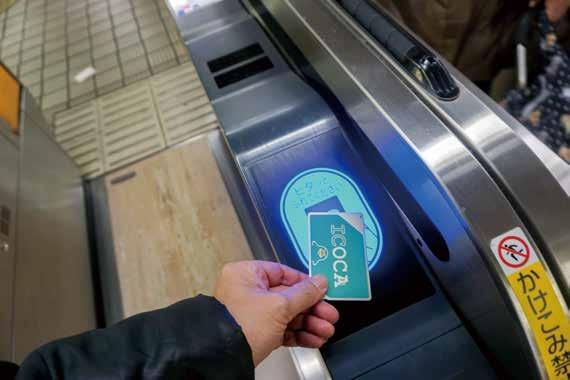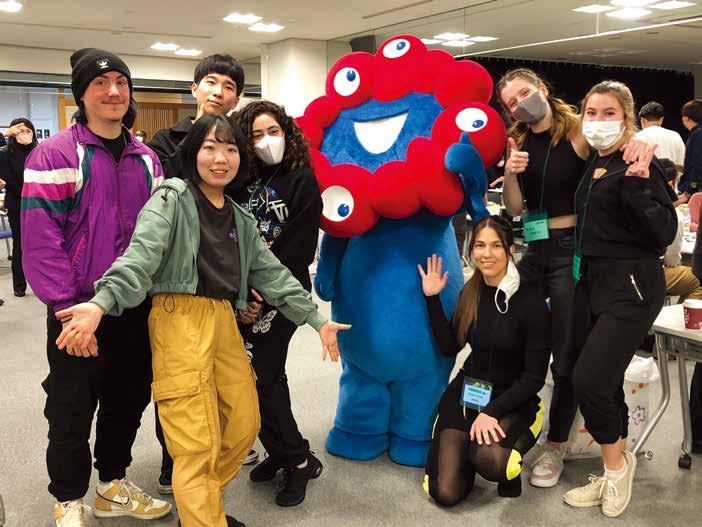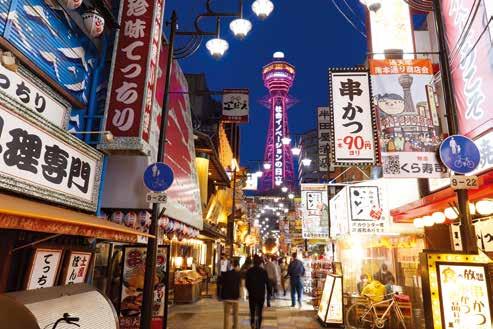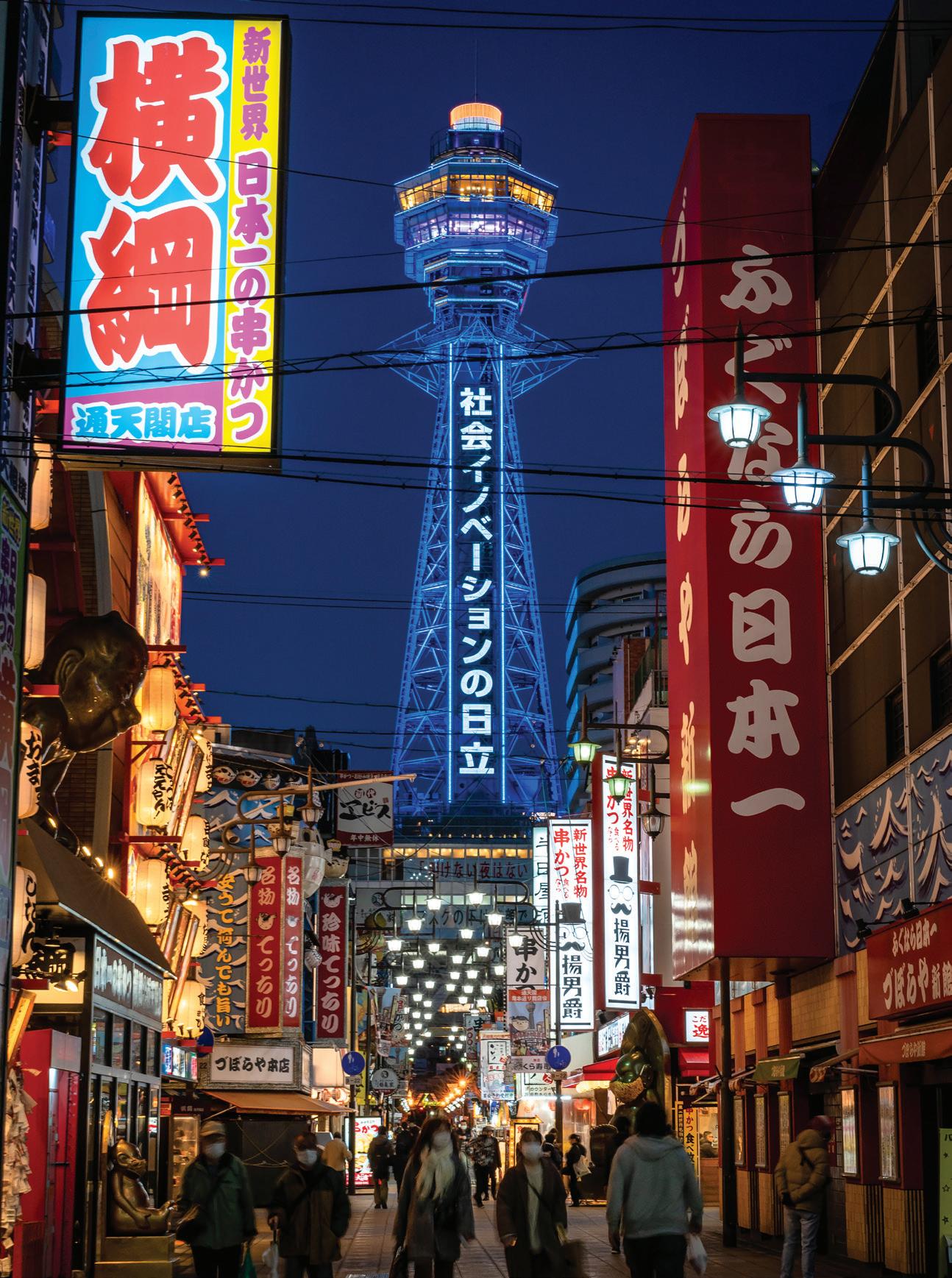Osaka at a glance
Osaka is renowned for its comedy
From Noh theater to Bunraku puppetry, Osaka takes pride in its long history of performing arts culture. Though you’ll find a host of modern musicals and concerts performing in theaters throughout the year, the locals also have a special appreciation for traditional forms of entertainment like rakugo (traditional comedic storytelling).
The city is not called ‘the nation’s kitchen’ for nothing! Osaka has a long culinary history. It flourished during the Edo period (1603-1868) as one of Japan’s centers of commerce, where merchants brought in a diverse array of produce and ingredients from different parts of Japan. Around this time, Osaka developed a gastronomy culture around the umami-packed stock known as dashi, where kelp from Hokkaido and bonito sourced from Wakayama, Kochi and Kagoshima were used to create what is now considered one of the fundamental elements of Japanese cuisine.
Osaka is the most populated city in Western Japan
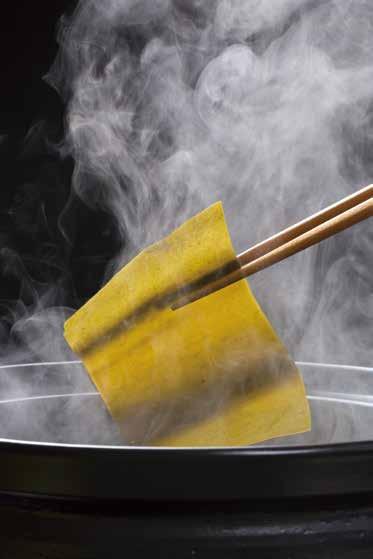

Osaka is not just the largest city in Western Japan –2.75 million residents according to the World Population Review 2023 – it’s also the travel hub for the Kansai region. Major tourist destinations such as Kyoto and Kobe are just a short train ride away, so you can easily use Osaka as the jump-off point to explore this fascinating part of Japan that is rich in culture, history, nature and city life.
 The Abeno ward of Osaka, where you'll find Abeno Harukas, the city's tallest skyscraper
Kombu (kelp), a key ingredient of dashi broth
The Abeno ward of Osaka, where you'll find Abeno Harukas, the city's tallest skyscraper
Kombu (kelp), a key ingredient of dashi broth
HIKOPHOTOGRAPHY/SHUTTERSTOCK © OSAKA CONVENTION & TOURISM BUREAU 4 Time Out Osaka for Osaka Convention & Tourism Bureau
The bustling entertainment district of Dotonbori
Ikeda, Osaka is the birthplace of the world’s first instant noodles

The ubiquitous instant noodles you’re accustomed to seeing in the supermarket? You can thank Momofuku Ando for this invention. The founder of Nissin Foods created Chicken Ramen, the world’s first instant noodles, in 1958, after a long process of trial and error, as a way to help the population recover from food shortages in the post-war era.
Osaka is consistently ranked as one of the world's most livable cities

In the Safe Cities Index 2021 from The Economist Intelligence Unit (EIU), Osaka was given an above-average score in all areas of security – notably in health security, where it ranked in the top five cities – making it the world’s 17th safest city. Osaka has also ranked among the top ten cities in the EIU’s Global Liveability Index every year since 2018, with impressive scores in stability, education, healthcare and infrastructure.
In 2022, Osaka opened its first Pride Center to support the LGBTQIA+ community
Osaka’s Doyamacho district has long been known as a hub for the city’s LGBTQIA+ community, with dozens of bars and nightclubs catering to gender and sexual minorities. And recently, the city opened its first Pride Center to support the community outside the realm of nightlife. Located in the Kita ward, the center offers counseling services and has a small library of LGBTQIA+ books. Everyone is welcome here, regardless of gender and sexuality. Come fall 2024, Osaka will be the first Asian city to host the International LGBTQ+ Travel Association’s annual global convention, further cementing its commitment to equality and diversity.
Some of the world’s greatest luminaries were born and bred in Osaka
Several notable figures who have left an indelible mark on Japan and the world were born in Osaka. This distinguished group includes architect Tadao Ando (who designed the Nakanoshima Children’s Book Forest pictured above), founder of Suntory Holdings Shinjiro Torii, and the creator of Astro Boy, Osamu Tezuka, to name a few.
 Nakanoshima Children’s Book Forest
Nakanoshima Children’s Book Forest
NISSIN FOODS HOLDINGS CO., LTD.
7MARU/SHUTTERSTOCK
5 Time Out Osaka for Osaka Convention & Tourism Bureau
© OSAKA CONVENTION & TOURISM BUREAU
Osaka is the host of the 2025 World Expo


With the Expo 2025 Osaka, Kansai coming soon, now is the perfect time to explore the Expo ’70 Commemorative Park. This park was formerly the site of the 1970 Expo and it still has some reminders of the event. The most famous is the Tower of the Sun installation, which was designed by the late Japanese artist Taro Okamoto. Inside the Expo Pavilion – another surviving structure from 1970 – you’ll find photographs, videos and other exhibits about the world’s fair. To get a bird’s-eye view of the park, take a walk along the Sorado aerial promenade to look out over the trees and gardens that replaced most of the 1970 Expo buildings.
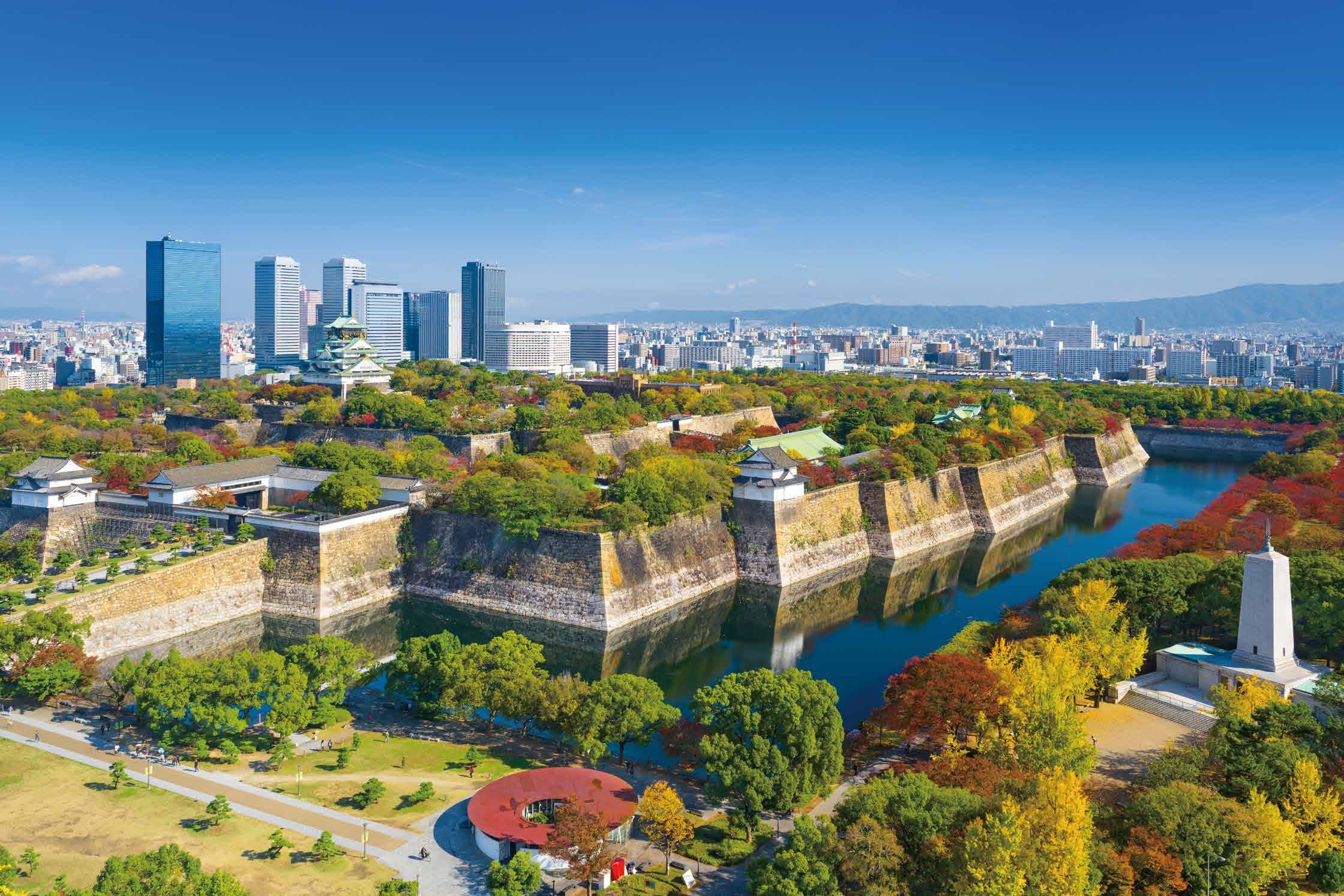
01
SAKAI CITY
6 Time Out Osaka for Osaka Convention & Tourism Bureau
The Nisanzai Kofun ancient tomb, one of the sites belonging to the Mozu-Furuichi Kofun Group
The largest and most vibrant city in Western Japan offers some of the country’s most unique attractions and exciting experiences. Here’s why Osaka should be on your travel list
Osaka has a rich history
Osaka has a long history dating back around 1,600 years. It was once even the capital of Japan, so there’s a lot to discover here. The ancient tomb clusters of MozuFuruichi Kofun Group are a Unesco World Heritage Site. These burial mounds in Osaka prefecture’s Sakai, Habikino and Fujiidera cities are where former emperors from around the late 4th to the early 5th century were laid to rest.
Osaka Castle, which was originally built in 1583 but is now preserved as a museum, tells the city’s story through a collection of artifacts. Also, don’t miss the view from the top floor. Across the road from the castle is the Osaka Museum of History, which has a life-size recreation of Naniwanomiya Palace’s interior. Meanwhile, over at the Osaka Museum of House and Living in Tenjinbashi-suji Rokuchome, you can travel back in time to the Edo era (1603-1868) via a faithfully recreated townscape of old Osaka.

Osaka boasts some of Japan’s most impressive art exhibitions

Osaka’s thriving art scene offers a diverse array of works spanning multiple genres and art periods, from the traditional Japanese woodblock prints at the Osaka Ukiyoe Museum to the contemporary collections at the Nakanoshima Museum of Art, Osaka. The latter is just one of several notable art institutions on Nakanoshima island. Standing guard right outside its striking black cubic building is a whimsical astronaut cat sculpture by Kenji Yanobe.
While opened rather recently in February 2022, the Nakanoshima Museum of Art, Osaka took about 40 years of planning to build and amass its diverse collection. The museum’s roughly 6,000 works cover a broad spectrum from art to design, representing both international and Japanese names like Amedeo Modigliani and Yuzo Saeki.
No other city does street food like Osaka Stroll through Osaka’s entertainment epicenter Dotonbori and you’ll see that the city is obsessed with food – and that’s not surprising considering Osaka is the birthplace of some of the world’s most iconic street eats. The ubiquitous takoyaki (pictured below), a ball-shaped savory snack with a gooey center encasing chunky bits of octopus, is a joy to eat any time of the day.
So is okonomiyaki, a savory pancake cooked on a teppan grill right in front of you, stacked with any imaginable ingredients from seafood and pork to noodles and yam. It really is a dish where everything and anything goes. As for those deep-fried skewers of meat and vegetables known as kushikatsu – who could resist all that crispy golden goodness? Come to Osaka and forget your diet. Your appetite will thank you.

04
03
02
TANPONG
©
SEAN PAVONE/SHUTTERSTOCK
WATANATADA/SHUTTERSTOCK
OSAKA CONVENTION & TOURISM BUREAU
The lush and expansive Osaka Castle grounds
7 Time Out Osaka for Osaka Convention & Tourism Bureau
Nakanoshima Museum of Art, Osaka
Osaka’s cityscape is made up of unique and iconic architecture
The imposing Osaka Castle might be the city’s most recognizable landmark, but Osaka’s skyline is punctuated with a host of architectural wonders. Among them is the futuristic-looking Umeda Sky Building, distinguished by its pair of 40-story-tall towers connected at the top by a donut-shaped structure that is home to the Kuchu Teien Observatory.
The National Museum of Art, Osaka is another modern example. Despite being a subterranean facility, the museum makes a grand statement with a stunning steel sculpture at its entrance above-ground. Designed by world-renowned architect César Pelli, the sculpture was inspired by the life force of bamboo.
For an eccentric take on religious architecture, the Namba Yasaka Shrine is a must-see attraction with one of its worship buildings made to look like a lion’s head.

world’s best restaurants are in Osaka
Osaka may be known for its street food, but the city’s fine dining scene is fast gaining a reputation in the culinary world. In fact, Osaka has the fourth highest number of Michelin stars in the world.
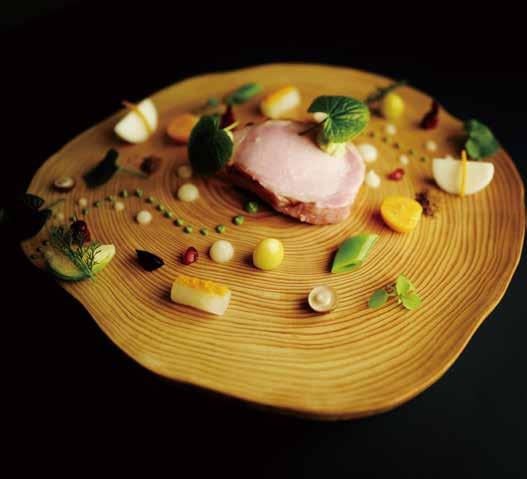
One of the most celebrated restaurants in the city, Fujiya 1935 is awarded with two Michelin stars for its innovative take on Japanese produce using modern European cooking techniques. Then there’s the three-Michelin-starred Hajime, whose immaculately plated dishes are inspired by nature and the seasons.
Osaka has a permanent teamLab museum set in a botanical garden
Osaka’s nightlife extends far beyond its bars and clubs, with attractions like the sensational teamLab Botanical Garden. This one-of-a-kind after-dark museum harnesses cuttingedge technology to create artworks that enhance the site’s natural splendor while showcasing the region’s flora.
Captivating displays include the surreal camellia garden, where ovoid-shaped sculptures, which look reflective during the day, transform into a glowing spectacle come nightfall. In fact, the many interactive exhibits scattered across the expansive wooded grounds offer different experiences at different times of the year to reflect the seasonal changes of the garden.

07
06
05
TEAMLAB, RESONATING MICROCOSMS IN THE COMMON CAMELLIA GARDEN –SOLIDIFIED LIGHT COLOR, SUNRISE AND SUNSET © TEAMLAB HAJIME
© OSAKA CONVENTION & TOURISM BUREAU
Namba Yasaka Shrine
8 Time Out Osaka for Osaka
&
Hajime
Convention
Tourism Bureau
Osaka has a diverse drinking scene
Osaka has the most exciting drinking scene in Kansai with its sheer variety of bars. Leading the pack are Bar Nayuta and Bible Club, both featured in the World’s 50 Best Discovery database. These two cocktail specialists each have a distinctive edge of their own: Bar Nayuta is a hidden bespoke cocktail den while the underground Bible Club is inspired by pre-Prohibition America. For something more casual, Uranamba is filled with tachinomi standing bars frequented by locals. And over at America-mura, there is a multitude of one-of-a-kind experiences, such as Space Station, which stands out with its vintage collection of video games and consoles dating back to the ’80s.
The clubbing scene in Osaka is booming
Osaka’s nightlife is legendary, with locals embracing every opportunity to party till late, and there’s no shortage of options to choose from. At one of the city’s most popular nightclubs, Pure Osaka, the walls are decorated with faux deer head mounts and the music goes on until 5am.
No worries even if you have very specific music preferences, as new venues catering to diverse groups are constantly popping up in the city. The new kid on the block Club Under, for example, has already garnered a devoted following among techno and trance enthusiasts, thanks to its impressive roster of up-and-coming DJs.
Osaka has its own LGBTQIA+ district
Located just a tenminute walk east of Umeda Station, Doyamacho is the undisputed heart of Osaka’s LGBTQIA+ community. More importantly, the area provides a safe and inclusive environment where queer folks can relax and socialize without fear of discrimination or harassment.
Doyamacho is a lot of fun and naturally is popular among locals and international visitors with its welcoming karaoke bars and bilingual drag shows courtesy of Haus of Kinki. For the former, check out Village and then move on to Explosion for its shimmery disco ball and bright pink dance floor.
Osaka has one of Japan’s best theme parks: Universal Studios Japan
Affectionately known simply as USJ, Universal Studios Japan in Osaka is a fun-packed theme park that brings some of the world’s most beloved movies and characters to life, including Hello Kitty, Pokémon and Minions. It is also the location of the world’s first Super Nintendo World, an immersive attraction that transports visitors into a real-life Super Mario video game. Here, guests can complete side quests, unlock points and even punch yellow blocks, just like Mario and Luigi.
Although USJ is one of several theme parks around the world owned by NBCUniversal, it has unique thrills that set it apart from its international counterparts. In the past, these included seasonal events inspired by popular Japanese franchises like Sailor Moon, Doraemon and Demon Slayer.
Osaka is for the whole family
For the young’uns and those young-at-heart, Osaka is a whole lot of fun. There are even great indoor options for cold and rainy days, such as the Legoland Discovery Center Osaka. While there’s a 4D cinema and VR ride, this attraction by the world’s most iconic brick is all about fueling your kids’ imagination, especially with the Model Builder’s workshop.

The Osaka Aquarium Kaiyukan is impressive, too, not least because of its resident whale sharks, the largest fish in the world. Here the exhibits spread out across six floors, taking you on a journey through the world’s most biodiverse regions.
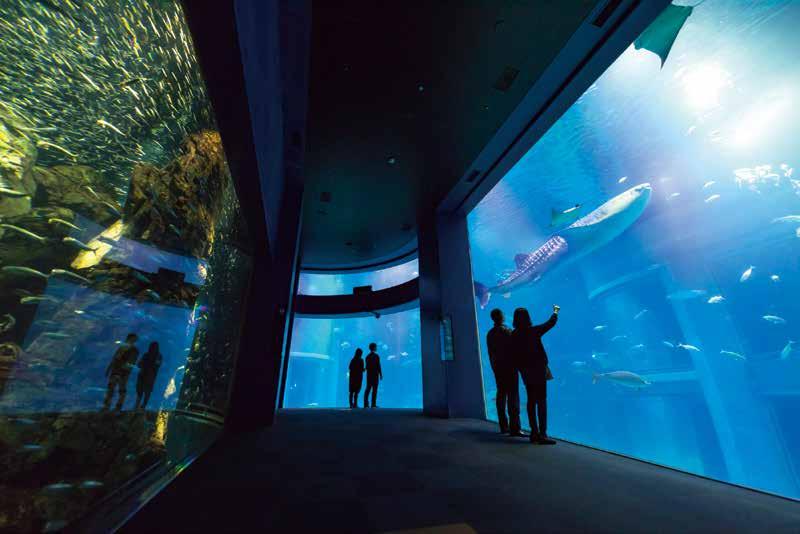
CupNoodles Museum Osaka Ikeda, which is dedicated to the life and achievements of instant noodles inventor Momofuku Ando, promises more unique experiences, especially the chance to create your own CupNoodles.
Osaka is crazy about sports
Osaka has an unwavering passion for sports. Whatever your game, you’re sure to find a place to watch along with passionate fans. Soccer is huge, with two top-flight J.League teams in Gamba Osaka and Cerezo Osaka. Baseball fans should head to Kyocera Dome Osaka to catch an Orix Buffaloes match. Osaka’s top division rugby team are the Hanazono Kintetsu Liners, who play at Hanazono Stadium, where you’ll also find a free museum on match days.

12
08
09
10
11
13
© CEREZO OSAKA
OSAKA AQUARIUM KAIYUKAN
© NINTENDO
Cerezo Osaka
Osaka Aquarium Kaiyukan
9 Time Out Osaka for Osaka Convention & Tourism Bureau
Super Nintendo World at Universal Studios Japan
kimono or home decor, Osaka’s wondrous department stores and shopping centers have everything you could imagine. An Osaka institution with a history dating back to 1929, Hankyu Department Store Umeda Main Store offers 15 floors of retail therapy including one of Japan’s largest cosmetics sections, all directly connected to Osaka Umeda Station. For depachika, Japan’s world-famous food halls, the one at Hanshin Department Store Umeda Main Store spoilt for choice.
Namba Parks
department store as the massive property features a lush terraced rooftop garden that stretches from the ground level to the 9th floor. Being one of Japan’s largest department stores, Abeno Harukas Kintetsu Main Store could easily occupy your day. Located in the 300m-tall Abeno Harukas skyscraper, it offers 16 floors of shops and restaurants plus ample resting areas. The building itself also hosts an art museum and observatory.
Shop till you drop with Osaka’s myriad of shopping options


Osaka has endless options for retail therapy. The city’s shotengai (shopping arcades) offer a traditional experience, especially the 380-yearold Shinsaibashi-Suji Street, a 600-meter covered arcade known for fashion, including a selection of designer stores. TenjinbashiSuji Street, on the other hand, has everything from kitchenware to kimono along a 2.6km stretch, making it Japan’s longest shotengai.
Osaka also has plenty of underground malls that are bustling come rain or shine. Namba NanNan is connected to Namba Station and has three different zones based on the type of stores, while Crysta Nagahori links up three central Osaka metro stations in Shinsaibashi and has around 100 shops. Back above ground, America-Mura is Osaka’s youthful shopping district with trendy boutiques and street fashion.
Osaka is a festival city
Osaka is a lively city year-round, and it gets even more exciting in the summer when there are festivals abound. The Tenjin Festival is one of the biggest in the country and dates back over 1,000 years. It takes place annually in July, with floats parading from Osaka Temmangu Shrine through the streets and even aboard boats on the Okawa River. The Aizen Festival falls shortly after, in which you’ll witness a geisha parading in a hoekago (literally means ‘treasure basket’) around the Aizendo temple.
In August, catch the Naniwa Yodogawa Fireworks Festival for a spectacular display along the Yodogawa River in front of the city skyline. Then there’s Summer Sonic at Maishima Sports Island in the same month. This is one of Japan’s biggest music festivals with major international and Japanese artists.

In fall, take a 25-minute train ride from Namba to Kishiwada for the Kishiwada Danjiri Festival, when a danjiri (massive wooden float) is pulled through the historic castle town. It takes place twice a year in late September and mid-October.
Back in the main city in November, Suminoe Art Beat brings art installations to Osaka’s Kitakagaya district. Also, don’t miss the Festival of the Lights held from November to January, where Osaka’s most popular attractions are lit up in colorful illuminations, including Osaka City Hall and the famous Midosuji avenue.
15
14
16
©
&
OSAKA CONVENTION
TOURISM BUREAU © OSAKA CONVENTION & TOURISM BUREAU NANIWA YODOGAWA FIREWORKS FESTIVAL
Hanshin Department Store Umeda Main Store
Tenjinbashi-Suji Street
10 Time Out
Naniwa Yodogawa Fireworks Festival
Osaka for Osaka Convention & Tourism Bureau
There’s abundant nature in and outside the city
With its vibrant food culture and lively nightlife, Osaka is a popular city destination. But that doesn’t mean it’s devoid of nature. Right in the heart of the city is Osaka Castle Park, a famous spot to catch seasonal flowers such as cherry blossoms and hydrangeas against the backdrop of the striking castle.
Take a 30-minute train ride from Osaka-Umeda Station and you’ll reach Minoh. This small city is known for Minoh Park, where you’ll find Ryuan-ji temple and the gentle streams that lead to Minoh Falls
Near the park is the Minoh Onsen Spa Garden, a hot spring perfect for unwinding after exploring the great outdoors.
Osaka produces a host of artisanal crafts that make for perfect souvenirs

With Osaka’s rich history, it’s not surprising that the city has been honing its arts and crafts for centuries. These days, the city’s artisan community is still thriving, and they make some of the most unique (and practical) Japanese souvenirs. The hand-forged Sakai knives are trusted by professional chefs for their sharpness, variety and durability, so home cooks would be proud to have one in their kitchen.
Beautifully polished Naniwa pewterware such as sake cups and teapots are made from a stable metal that doesn’t affect the delicate flavor of the drinks they hold. Senshu towels, on the other hand, are known for their high absorbency and softness. Even today, they are still colored using the Naniwa honzome handdyeing technique unique to Osaka.
pop culture scene
Osaka’s center of all things pop culture – anime and manga included – is Den in Nipponbashi. There are huge outlets of Yellow Submarine and Animate to explore, perfect for finding collectibles, books and DVDs. Den Den Town is also a great place to buy electronics, as it’s the biggest ‘electric
Ninja-Do
in Shin-Imamiya lets you live out your ninja dreams (reservations required): you can put on the famous black outfit and try classic experiences like stealth walking and throwing (star-shaped blade). Meanwhile, in Dotonbori lives up to its name with cutesy food in a very pink space, where you can take photos with the staff
20Enjoy some of the most luxurious experiences in Japan

For an unforgettable splurge in Osaka, skip the bus tours and opt for an extravagant helicopter ride with Ogawa Air’s Osaka Sky Cruise, which will take you up in the air for a jaw-dropping aerial tour of the city.
Prefer to immerse yourself in Osaka’s unique culture? There are exclusive tours that will get you access to an intimate Noh performance at Osaka Temmangu Shrine followed by a tea ceremony. You could even spend a night at the luxurious forest retreat Otowa Sansou.
18
17
à Note: please check the respective venues’ and events’ websites for the latest operating hours and program.
KITTICHAI/SHUTTERSTOCK
© OSAKA CONVENTION & TOURISM BUREAU
11 Time Out Osaka for Osaka Convention & Tourism Bureau
Minoh Falls
Den Den Town

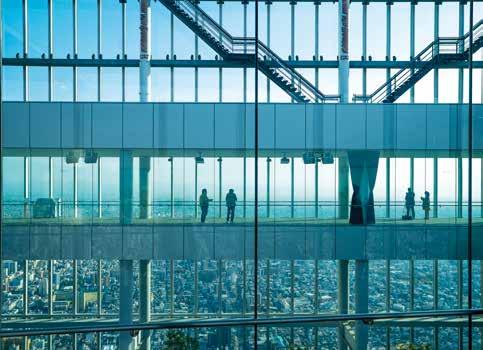






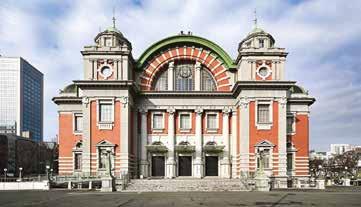 Osaka City Central Public Hall
Geihinkan Former Guest House
Umeda South Hall
INTEX Osaka
Osaka International Convention Center
Osaka City Central Public Hall
Geihinkan Former Guest House
Umeda South Hall
INTEX Osaka
Osaka International Convention Center

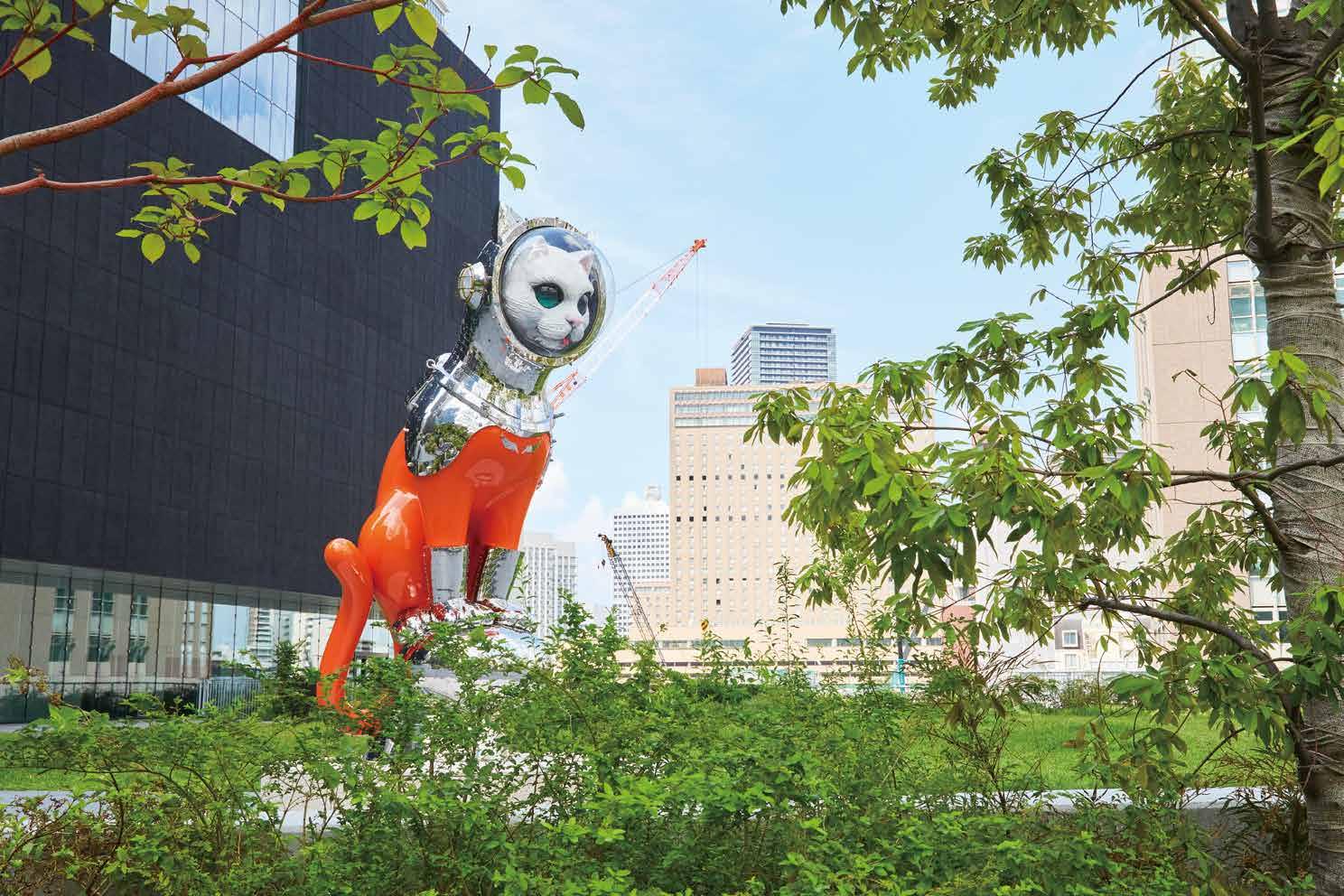


 The Abeno ward of Osaka, where you'll find Abeno Harukas, the city's tallest skyscraper
Kombu (kelp), a key ingredient of dashi broth
The Abeno ward of Osaka, where you'll find Abeno Harukas, the city's tallest skyscraper
Kombu (kelp), a key ingredient of dashi broth

 Nakanoshima Children’s Book Forest
Nakanoshima Children’s Book Forest



















